All about spunbond
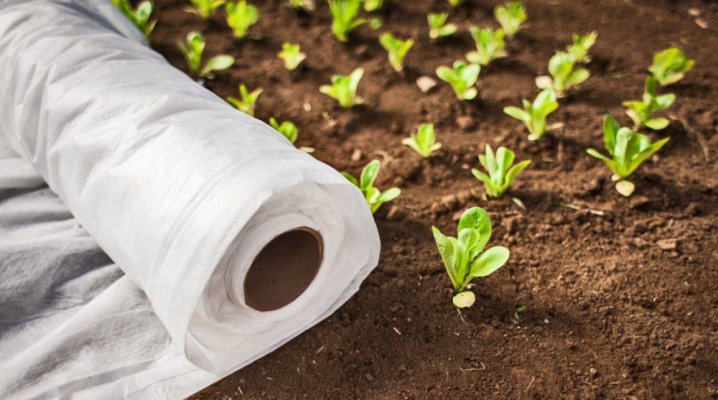
Gardens and vegetable gardens will never cease to be in demand. Today, many summer residents grow a variety of crops on their plots. In order for the yield to be higher and more productive, people often resort to using a special material - spunbond.
It can be used not only in the country, but also in many other areas.
Let's take a closer look at this multitasking material.
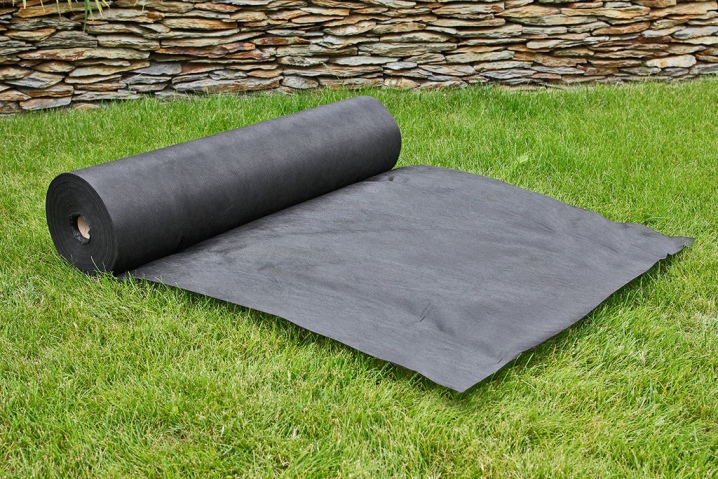
What it is?
Spunbond is a special technology for the production of a special nonwoven material from a polymer melt by the spunbond method. In the professional field, this is also the name of the material itself, which is produced according to the described technology.
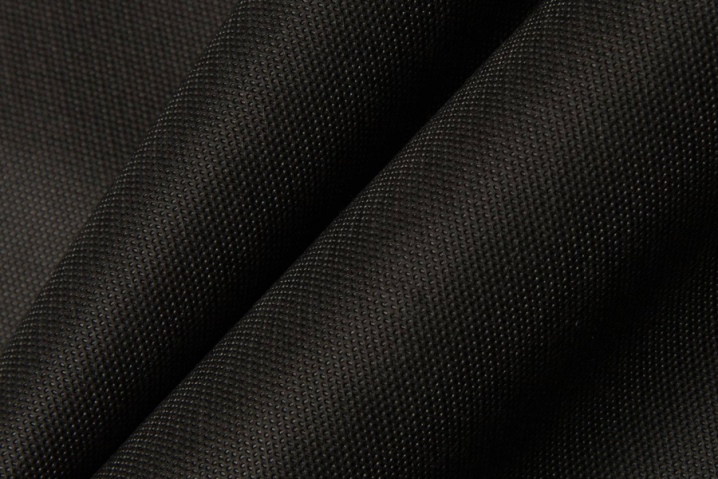
The process of making a high-quality spunbond must necessarily include 2 main stages: the formation and subsequent bonding of the fibers of the web. There is one more manufacturing stage. It consists of additional finishing of canvases... This means dyeing, impregnation, for which a special composition is used, and other procedures that increase the positive properties of nonwoven fabric.
High-quality spunbond is made in different colors... This material is easy to paint and looks quite respectable.
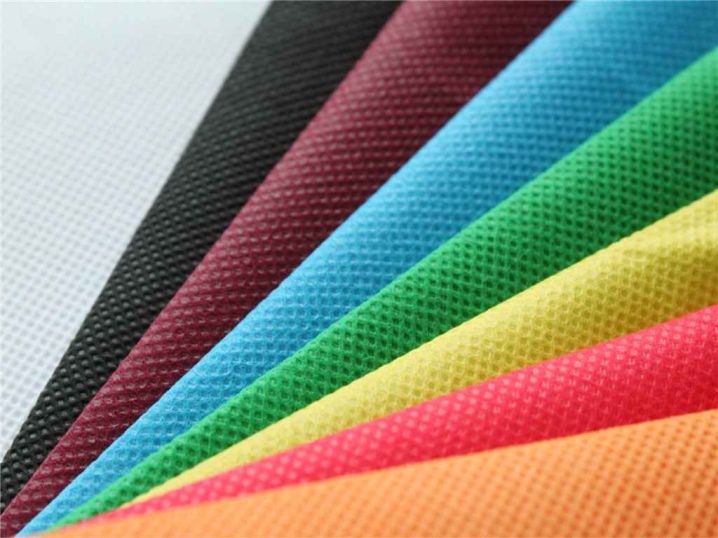
Specifications
Spunbond is a popular material used in many areas of human life. This multitasking fabric of different colors has certain technical characteristics. They should be taken into account if you have planned the purchase of such matter for one purpose or another.
Melting temperature
The technical characteristics of a nonwoven fabric are directly influenced by the components that are used in its manufacture. Often, spunbond is based on polypropylene or polyester (PET) in a granular or powder state. These materials are melted and then run through a special spinning machine with nozzles (these are thin holes).

The finished material can change its own physical properties under the influence of too high temperature values. In the most unfavorable situations, nonwoven fabric can soften, begin to shrink, melt and even decompose. Some brands, due to the presence of special additives, are produced so stable that they can easily withstand heating, reaching 130 degrees Celsius.
Width
The parameter of the width of the considered nonwoven type material is determined by the distance that takes place between its edges. This figure can vary within fairly serious limits - from 6 cm to 4 m and more.
Spunbond is a material that can be cut easily and without problems, therefore many manufacturers cut to the width that consumers demand.
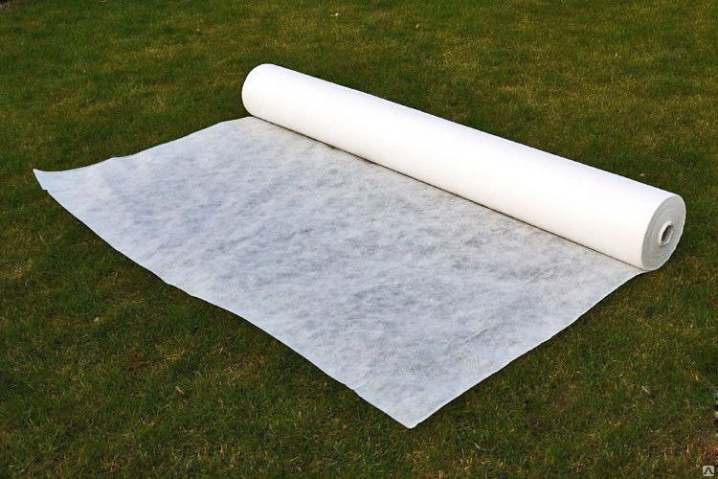
Dimensions (edit)
Spunbond is a nonwoven fabric that comes in a variety of sizes. They are often found depending on the level of density of the product. Variants with such dimensional parameters are widespread:
- 3.2x10 m;
- 3.2x150 m;
- 1.6x200 m;
- 1.6x150 m.
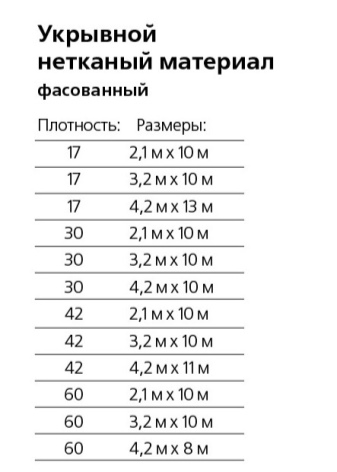
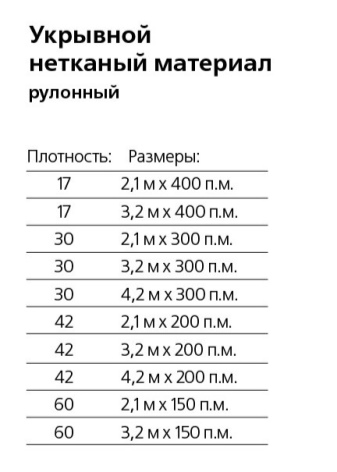
Thickness and density
The thickness of the spunbond is determined by its direct purpose and manufacturing method. The degree of its air permeability, rigidity, thermal insulation and many other important characteristics will depend on the index of the thickness of the nonwoven fabric.
It is important to pay attention to this parameter when choosing a spunbond, since it is one of the most important. And also a weighty criterion is the degree of tissue density. The higher it is, the more expensive the product is.
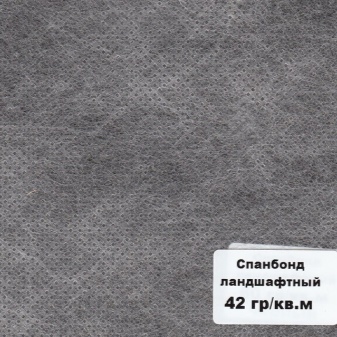
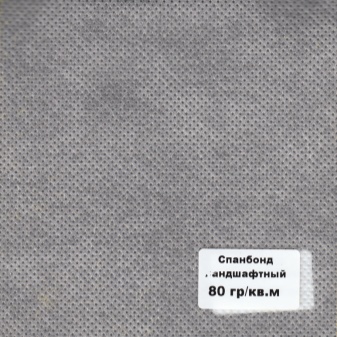
In most cases, for various types of agricultural needs, they are used agrofibers with indirect indicators of thickness from 17 to 60 g / sq. m.
The modern consumer has the opportunity to choose spunbond for any purpose. Depending on this, you need to choose a matter of a certain thickness and density. Many major manufacturers offer options with a wide variety of parameters.
Advantages and disadvantages
It is not for nothing that the material in question has become so popular and in demand. It is sold in many specialty stores and is in high demand. This is not surprising, because this non-woven fabric is characterized by a large number of positive characteristics.
- Non-woven fabric unhindered passes ultraviolet rays through its structure, which are needed for the healthy growth of plantings in the garden.
- Spunbond features low electrical conductivity.
- Quality material. Manufactured using the correct technology, it will have high tensile strength characteristics. Moreover, this applies to situations when the canvas is not only dry, but also wet.
- Vapor permeability - another positive indicator of spunbond.
- This is the stuff that fluctuations in temperature and humidity are not terrible. Spunbond is not afraid of low temperatures. Of course, under the influence of high temperature indicators, some of its properties may change, but many manufacturers produce high-quality fabrics, which are supplemented with special impregnations that make them more resistant to such external conditions.
- Quality material leaks water. Some summer residents are surprised that the newly purchased material does not allow the irrigation liquid to get to the plants on the site, but there is nothing strange about this. For the canvas to become water-permeable, some time must pass (for it to get wet). Although on sale you can find various products from such a spunbond, which, on the contrary, is moisture resistant.
- Spunbond is wear-resistant material... This factor has a positive effect on the durability of the nonwoven fabric. It can serve for a long time without bringing any trouble.
- The material in question is easy lends itself to staining. That is why on sale you can find a large number of canvases made in a variety of colors. Thanks to this, spunbond becomes not only practical, but also more attractive and presentable.
- Spunbond presented in a wide range of density. This suggests that the most suitable option can be selected for almost any purpose.
- High-quality fabric "breathes" and prevents moisture from evaporating too quickly.
- If you use a properly selected spunbond in the garden, then summer residents can save themselves from many problems. For example, the beds will be rid of annoying weeds, gardeners will be able to save their free time and energy by working in the country. Fruits and berries, thanks to spunbond, can remain in perfect condition.
- Many summer residents are interested in whether it is possible erase the matter in question... It is believed that such a procedure is permitted for carrying out. However, it is best to wash the product at a temperature similar to that which is stored outside in the summer, then the film should not be damaged in any way. It is advisable to set such values in the machine - 30-40 degrees and a careful mode.
- Spunbond is non-combustible material, which speaks of its safety.
- Well-made spunbond features environmental friendliness... This material does not emit hazardous chemicals and is incapable of harming either the planting in the garden or the human body.
- Spunbond is inexpensive material.


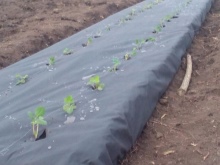
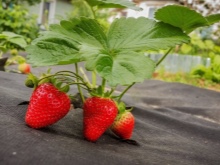
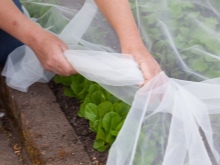
The canvas in question has not only pluses, but also minuses.
- Spunbond is a breathable material, but under it plants breathe differently - like in a respirator. Neither insects, which are engaged in pollination, nor birds can get to them. On the one hand, this is good, but on the other, not very well.
- If spunbond is used for arch-type structures, then water drops will simply roll down them and will not have time to penetrate into the interior. If the summer is rainy, then this is even good.
- Usually the material in question has a democratic price tag, but there are varieties that are quite expensive. This is a high-strength reinforced version.
- After the season, spunbond is recommended to be disinfected.
- Some types of nonwovens, when spread on the ground, let water through abundantly, so you have to resort to ventilation. Otherwise, you may encounter excessive waterlogging.
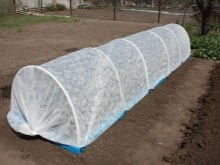


Views
Spunbond comes in different types. Let's get to know them better.
Laminated
A separate type of matter. Most often used in the medical field. It has such a structure that it does not allow air or moisture to pass through itself. It is a harder and more durable material that is two-layer. The density can be from 42 to 65 g / sq. m.
This type of fabric is very well protected with a polypropylene coating.
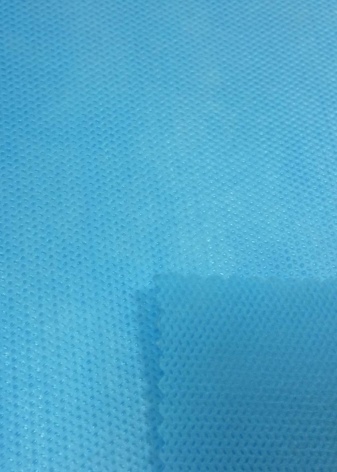
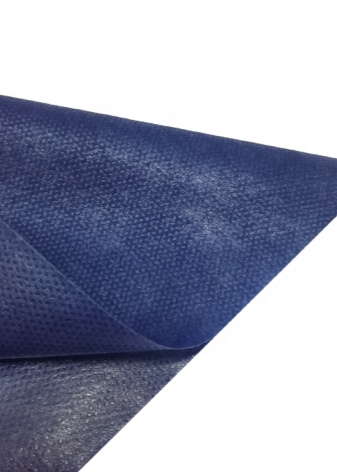
Color
Colored spunbond is widespread and common. This kind of matter can be painted in a wide variety of colors. For example, it can be blue, green, white, red, gray, beige, brown and even black options. Often the adhesive type of material is realized in black.

Sometimes there are more interesting and bright specimens with a pattern.
The colorful material is used in many areas. It is used to make bags, upholstery of interior parts of furniture structures, covers and many other products.

Reinforced
Non-woven fabrics of this type can be expensive.... Most often, reinforced spunbond is used for the manufacture of greenhouses and hotbeds. The canvas is supplemented with a high-quality reinforcing layer, thanks to which it becomes more durable, practical and well protected. Usually comes in rolls or bags. Often covered with a laminating layer, due to which it becomes waterproof and does not get wet at all.
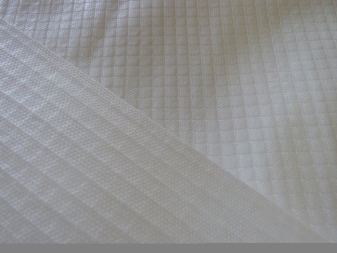
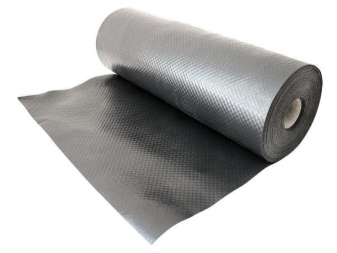
Foil
Foil sheets are usually designed for temperature fluctuations from -50 to +100 degrees Celsius. They belong to the class of low-combustible materials. The canvases are made to be moisture-proof and are usually used as vapor barrier layers. They are fixed on the outer walls of various buildings.
Foil spunbond is also suitable for insulating roofs, balconies, saunas, baths, verandas and other similar objects.
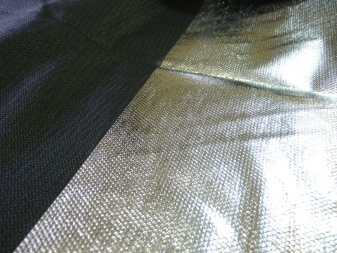

PVC dot coated
Inexpensive material. The base color in it can be white, blue, pink or other. The color of PVC dots also varies, but light gray elements are more common. It is a non-slip non-woven fabric with high density and tear strength.
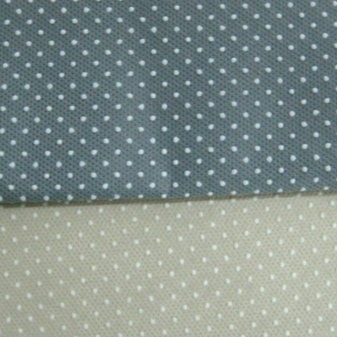
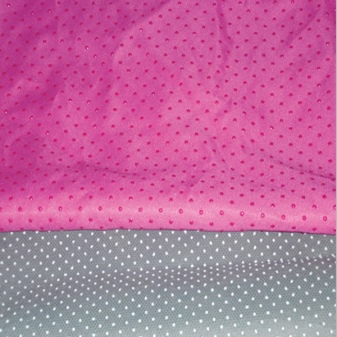
Filtering
High-quality filter-type spunbond is popular nowadays. Such materials are often used in drainage structures, in the preparation of reservoirs, in many filtering systems. This type of spunbond is also durable and reliable.

Difference from other materials
The current market is literally overflowing with various covering materials used in different fields. Because of this, buyers often do not understand why spunbond is so different, for example, from agrofibre. The answer is simple: the listed materials have approximately the same characteristics.The fact is that these are one and the same product, released under different brands. The same can be said about such material as agrotex or agrospan.
Almost nothing distinguishes geotextiles from spunbond, however, it can be both non-woven and woven, but it is made using the same technology as spunbond. In fact, this is one of the varieties of spunbond, but with a wider field of application.
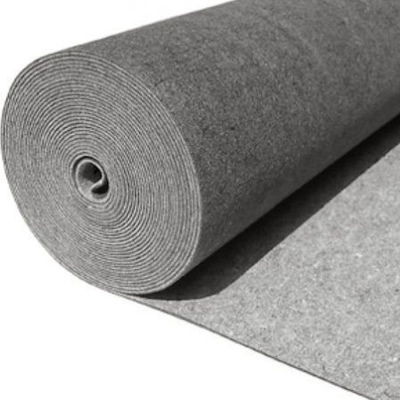
Spunbond is often compared to many other common materials. For example, with microfiber. These are different materials, but many manufacturers make napkins from them. Only microfiber is suitable for the manufacture of soft products for cleaning various surfaces, and spunbond is more often used for the production of wet wipes.
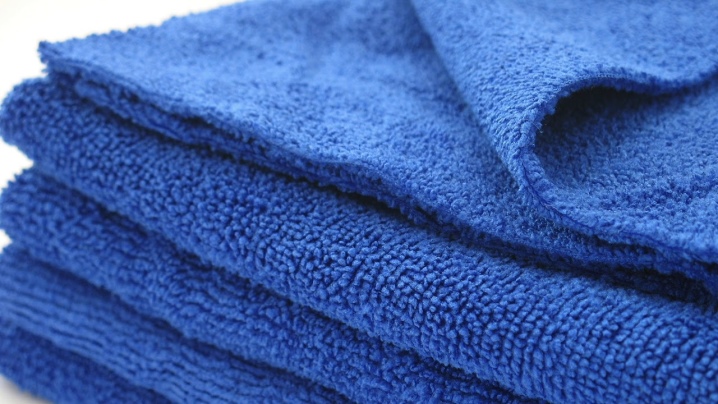
Applications
Spunbond is multitasking material... As mentioned above, it is applied in various fields.
Agriculture
Spunbond is often bought for the maintenance of a garden or vegetable garden. The material has properties useful in agricultural conditions:
- effectively protects plantings from frost, precipitation, weeds;
- helps the soil to warm up faster, promotes the early emergence of sprouts;
- increases the time between waterings.
Spunbond makes an excellent covering material for a greenhouse or greenhouse.
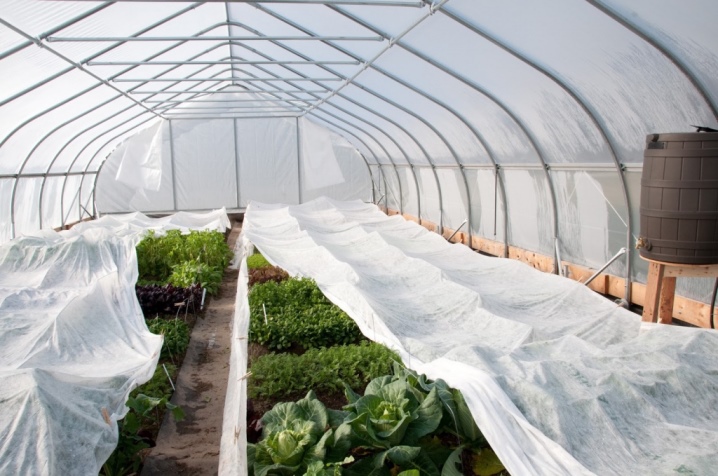
For landscaping
Spunbond is often used in landscape design surrounded by private houses. It can be used as a drainage cushion. By laying this material, surfaces are leveled for the construction of decorative embankments. When using high-quality non-woven fabric, neat flower beds can be made.
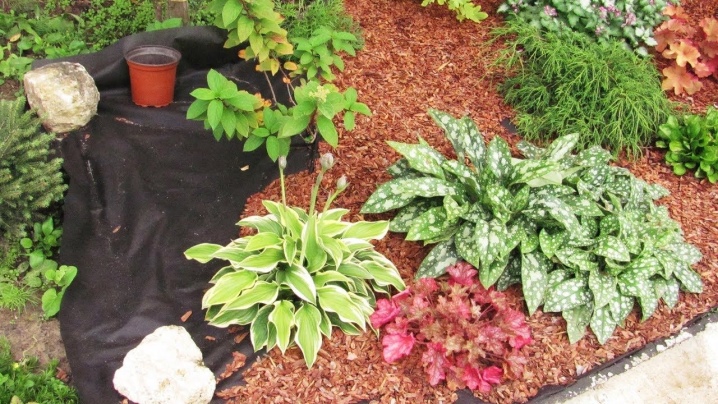
In construction
In this area, spunbond can be used like this:
- suitable material can be used instead of vapor barrier;
- the material is placed under the rubble during road construction;
- good windproof membranes are made from spunbond;
- intermediate layers are made between the wall and the finish to prevent cracking.

For furniture
Lightweight nonwoven fabric is often used in furniture making. It makes an excellent separator between upholstery and filling.... And also spunbond is often used as a cushioning material for springs.
For the same purposes, a special thermal felt is often used. It is difficult to say which of the materials is better. But you shouldn't call felt and spunbond substitutes for each other. It happens that both materials are present in furniture structures.

Overalls
Since spunbond is mainly represented by inexpensive varieties, it is used in the production of such things:
- dressing gowns (not only medical, but also for workers in canteens and other catering establishments);
- appropriate hats (caps);
- aprons;
- special trousers.
A lot of workwear for service workers is made from high-quality spunbond.
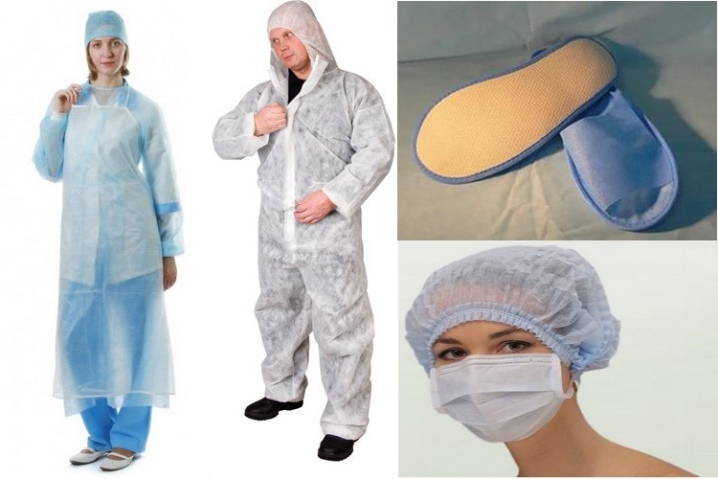
Packaging and storage systems
From the material in question, excellent packaging and storage are obtained:
- covers and organizers for storing clothes;
- storage facilities for various household items;
- things that need to be protected from dust, but allow them to remain breathable;
- shoe covers;
- for cosmetics.
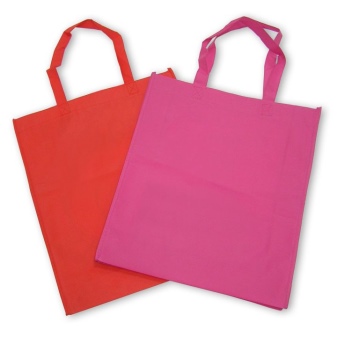
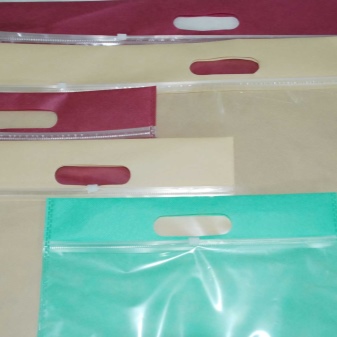
Medicine
Consider how spunbond can be used in the medical field. They make of it:
- disposable sheets;
- medical gowns;
- masks;
- shoe covers;
- medical caps;
- disposable surgery kits.
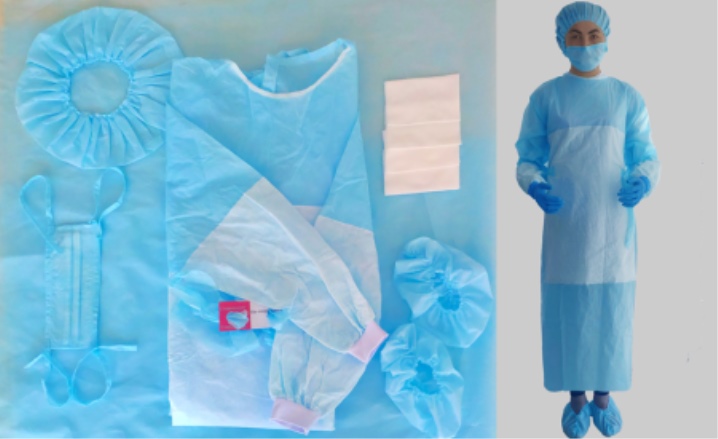
Filters
Spunbond can be used as a filter element as follows:
- for filters designed to work with chemicals;
- in car air filters;
- in filters designed to protect the human respiratory system;
- for household filters (dust collectors are meant).
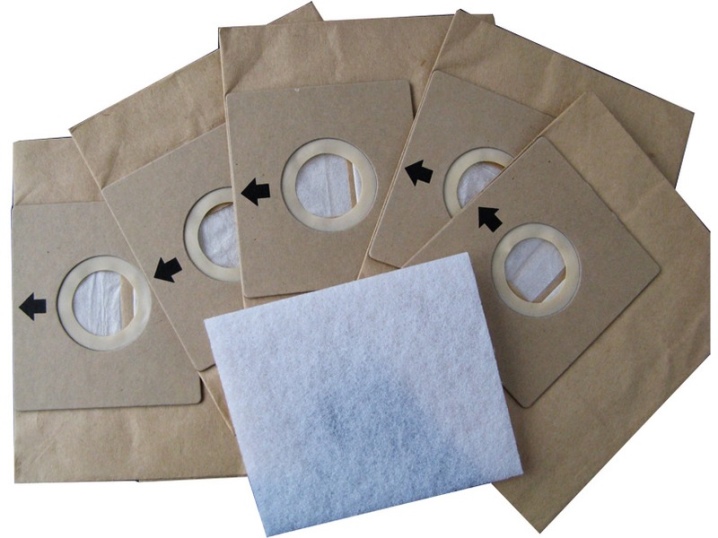
Top manufacturers
Let's take a look at a small list of the best manufacturers of quality nonwovens.
- LLC "Geomaterials". The company produces nonwoven fabrics with different densities.The manufacturer's products are of high quality, dense and soft. The assortment includes products designed for both year-round use and specific seasons.
- Factory "Elastic"... Large manufacturer of spunbond and meltblown. The plant produces high quality products at affordable prices. Each product is made from reliable and quality components.
- "Hexa"... Quite a large manufacturer that produces high-quality and durable products that perfectly cope with their main tasks. Hexa boasts a rich assortment of practical goods. Quality control of goods is carried out at all stages of production.
- TD "Van-Market". Manufacturer of spunbond nonwoven fabrics, as well as waterproofing materials, laminated products and polyethylene films. TD "Van-Market" specializes in the production of high-quality products adapted to operating conditions in a wide range.
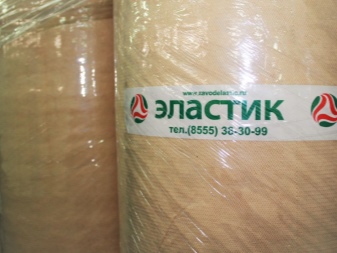
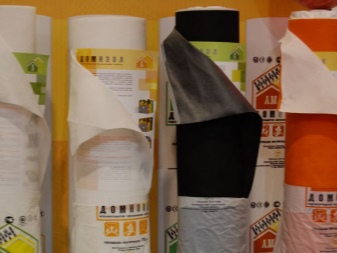
Selection recommendations
Let's take a look at some guidelines for choosing a suitable non-woven type product.
- Before you go shopping for such material, you need to decide what exactly you are buying it for. Based on this, it makes sense to select canvases of a certain thickness and density.
- Pay attention to the color of the spunbond, especially if the aesthetic component of the question is important to you.
- Decide on the right amount of nonwoven fabric. It is advisable to buy spunbond with a small margin, so that in case of an unforeseen situation you do not have to buy another roll and not run into a shortage of material.
- Make sure that the packaging in which the nonwoven is sold is in perfect condition. It should not be damaged or torn.
- Today, spunbond is produced by many large manufacturers. It is recommended to buy only high quality branded canvases. Find suitable fabrics in specialized stores.
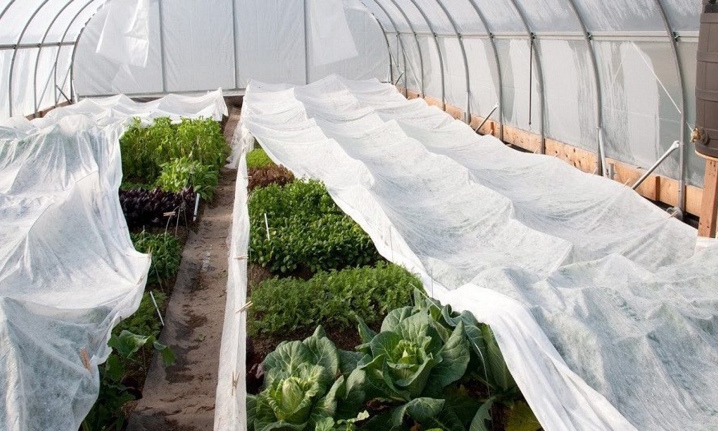
For more information on how to choose the right spunbond, see the next video.



































































The comment was sent successfully.